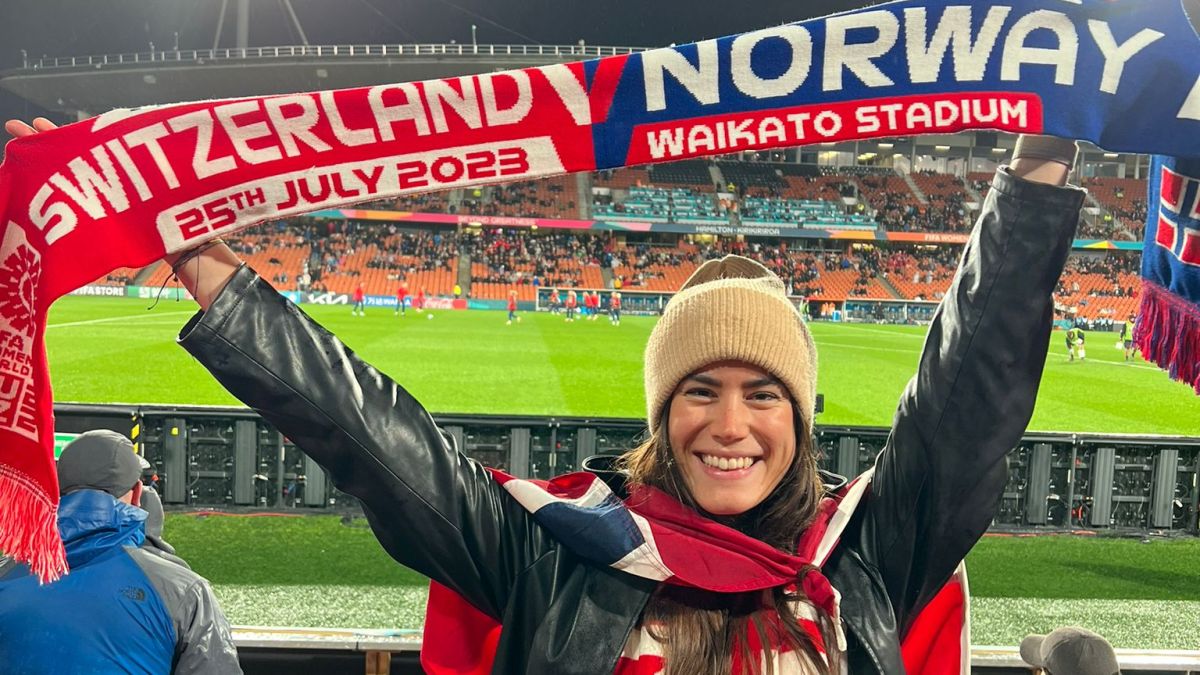After a slow build-up, a World Cup buzz grows in New Zealand - 5 minutes read

Auckland and Hamilton, New Zealand – Even in her wildest dreams, Helena Molly had not imagined how well the Women’s World Cup would start for the co-hosts New Zealand, who had won just one out of their nine warmup matches leading up to the tournament.
The longtime fan of New Zealand’s women’s national team had attended the Football Ferns’ 1-0 victory in the tournament’s curtain-raiser in Auckland on Thursday against a star-studded Norway team.
Hannah Wilkinson’s 47th-minute strike following a sweeping move across the pitch was one for the history books, handing New Zealand their first-ever win at the World Cup, prompting wild celebrations at Eden Park, the home of the nation’s greatest sports team and symbol, the All Blacks.
Molly told Al Jazeera it was “emotional and surreal” at Eden Park, in a record crowd for a football match in New Zealand.
“The record crowd was loud and joyful, full of young people seeing their idols up close and others finding out who the Ferns were for the first time,” she said.
“I was nervous before the game because the Ferns have not been playing well, but from the first minute, it was quite clear something special was going to happen. It was exhilarating and the country has been buzzing for days since.”
The nation’s leading newspaper, the New Zealand Herald, led with the headline The Goal that Stopped a Nation; likening Wilkinson’s strike to other feats in New Zealand’s sports history, such as Allison Roe’s stunning 1981 victory in the New York Marathon and Belinda Cordwell reaching the Australian Open semi-finals in 1989.
It signalled a shift in energy after a low-key build-up characterised by limited enthusiasm and the slow uptake of tickets, with sponsor Xero giving away 20,000 tickets for tournament matches to boost attendances.
In downtown Auckland, local girls and boys’ teams played pick-up games at the FIFA fan festival. The bookshop on Elliot Street promoted the autobiography of Australian women’s football legend Sam Kerr, among other football titles. World Cup banners lined the streets.
Last year Wilkinson painted a mural at Eden Park, juxtaposing rugby, cricket and football players, neatly highlighting football’s fight for relevance in a rugby-dominated scene.
Wilkinson’s mural at Eden Park [Samindra Kunti/Al Jazeera]
Watching the Auckland Warriors vs Canberra Raiders rugby league match the day after the New Zealand vs Norway game, Sydney Filou – like countless other rugby fans – didn’t know the Women’s World Cup was on. A lifelong fan of the local outfit, rugby league was his “footie”.
“Our game is fast and athletic. That is the thrill,” he said. “Why would you want to watch your football?”
That afternoon football fans watched Nigeria vs Canada at a pub near Auckland’s waterfront, cheering on the North Americans before gradually shifting their allegiance to the underdogs in search of a precious World Cup point.
In the first days of the Women’s World Cup, American fans dominated the streets of Auckland. Back at Eden Park, some dressed up as the Statue of Liberty and others wore shirts of the talismanic Megan Rapinoe for their match against Vietnam.
Vietnam’s fans, meanwhile, set the stadium awash with colour to celebrate a major milestone in the country’s sporting history: for the first time, a Vietnamese men’s or women’s team would be competing in a World Cup.
“We support our great girls,” said Tiep Mai Thanh, a member of the Vietnamese expat community in New Zealand, who could barely contain his excitement.
“The Vietnamese Football Federation have invested more in the women’s game and we believe the men will follow in their footsteps one day. Society’s awareness of women’s football has increased. The corporations will sponsor more and a lot of young girls like to play the game in Vietnam.”
‘The buzz should be bigger’
Karoline Bernacki, who had travelled from her home in Stavanger to watch Norway play Switzerland in Hamilton on Tuesday, was just as excited.
She said that while there was a buzz around the tournament, the lack of European fans was a shame.
“I’ve seen a lot of Americans, I’ve seen a lot of Argentinians at the Italy match, but I am missing the European supporters,” said Bernacki.
“It’s different economies. Not everyone can afford [to travel] this far. It is a different vibe from the men’s World Cup because there is more interest in the men’s game. I’m hoping that the women’s game will become more and more popular. The interest is there.”
Keith Parker, who plays for amateur football team Peringa United FC in New Zealand’s North Island city of New Plymouth, was watching the match at a Hamilton pub, amid fellow New Zealanders disappointed by their side’s shock defeat 1-0 to the Philippines.
“The buzz should be bigger given that it’s the biggest sport in the world and the biggest tournament in the world, but football is on the way to becoming the most popular sport in New Zealand,” he told Al Jazeera. “Kids are playing it all the time. In the province where I live – Taranaki – there are more children playing football than rugby, the national game.”
Molly, who will attend Spain vs Zambia and the US vs Portugal, believes that some criticism of the Kiwis’ limited enthusiasm for the tournament is unjustified, arguing that ultimately the Women’s World Cup will leave an important legacy.
“Rugby is the sport most Kiwis follow and we haven’t had much success – male or female – in football to attract attention to the game, but in a nation of fewer than six million people, getting multiple 30k plus attendances, including to neutral matches, is quite a staggering achievement, “ concludes Molly.
“The Ferns have now become household names and hometown heroes, more or less overnight. That shows young players the pathway that is available to them if they want to work for it.”
Source: Al Jazeera English
Powered by NewsAPI.org